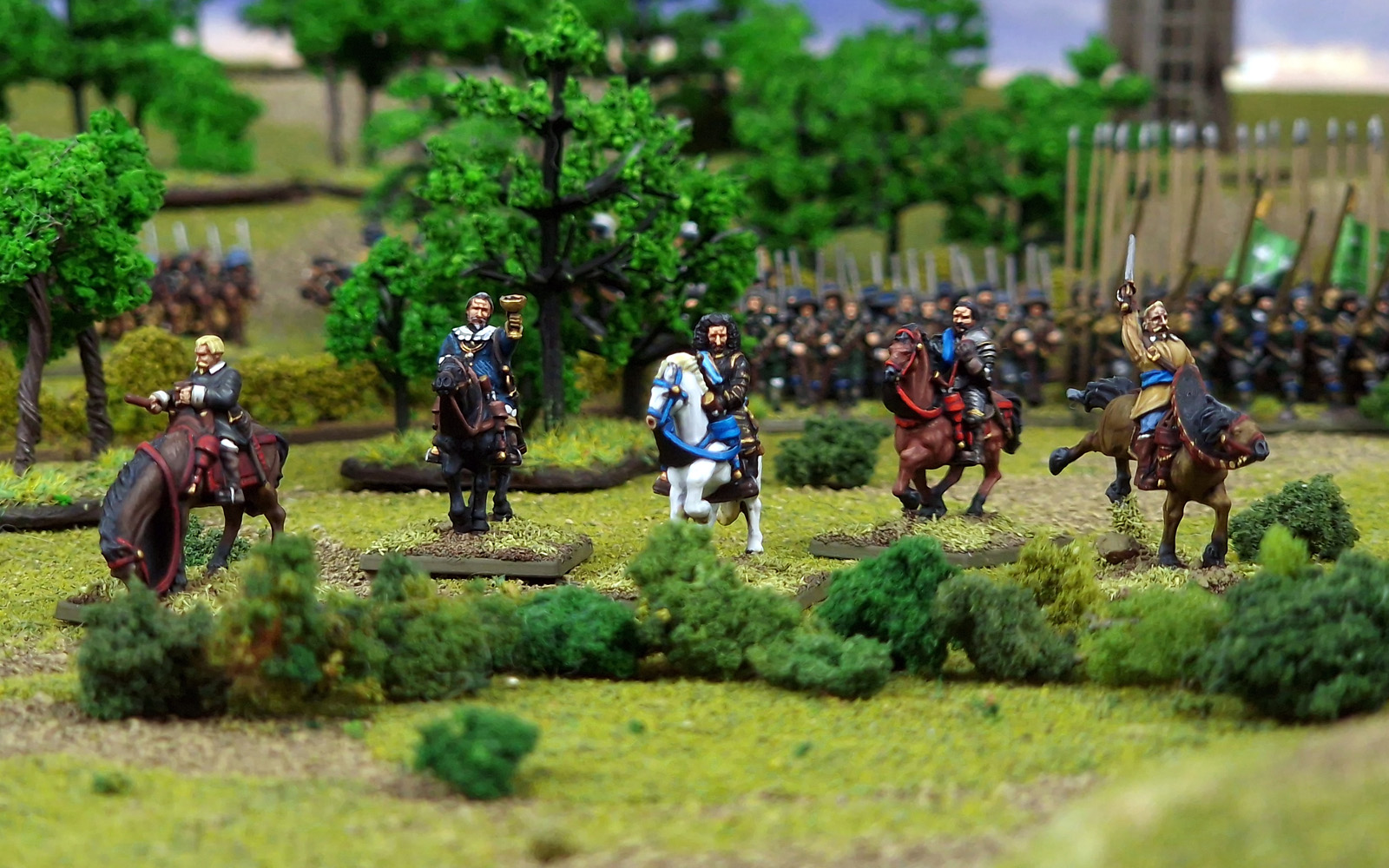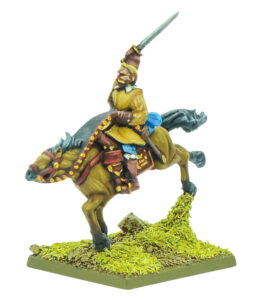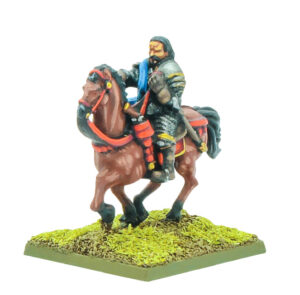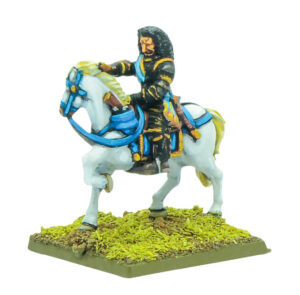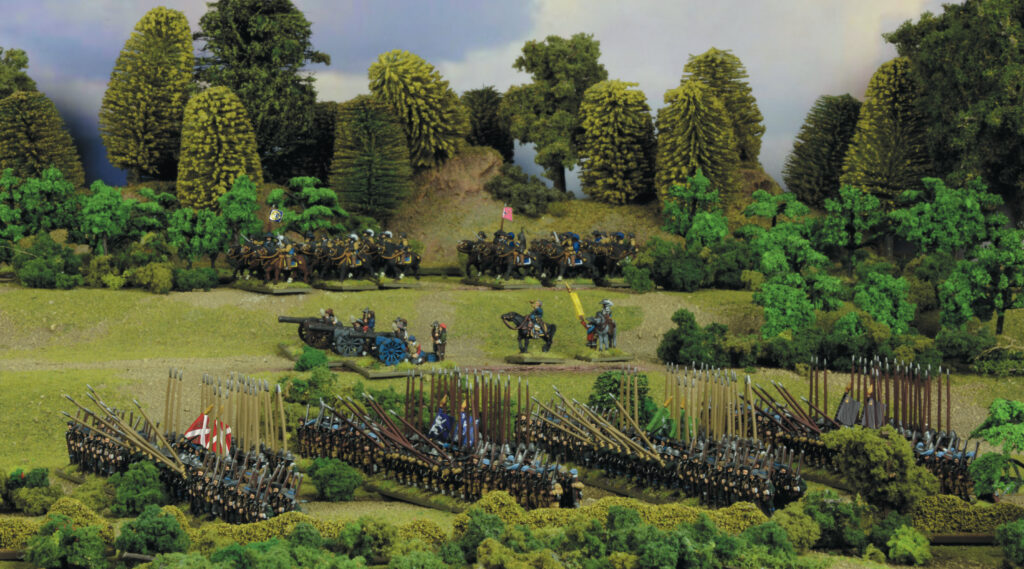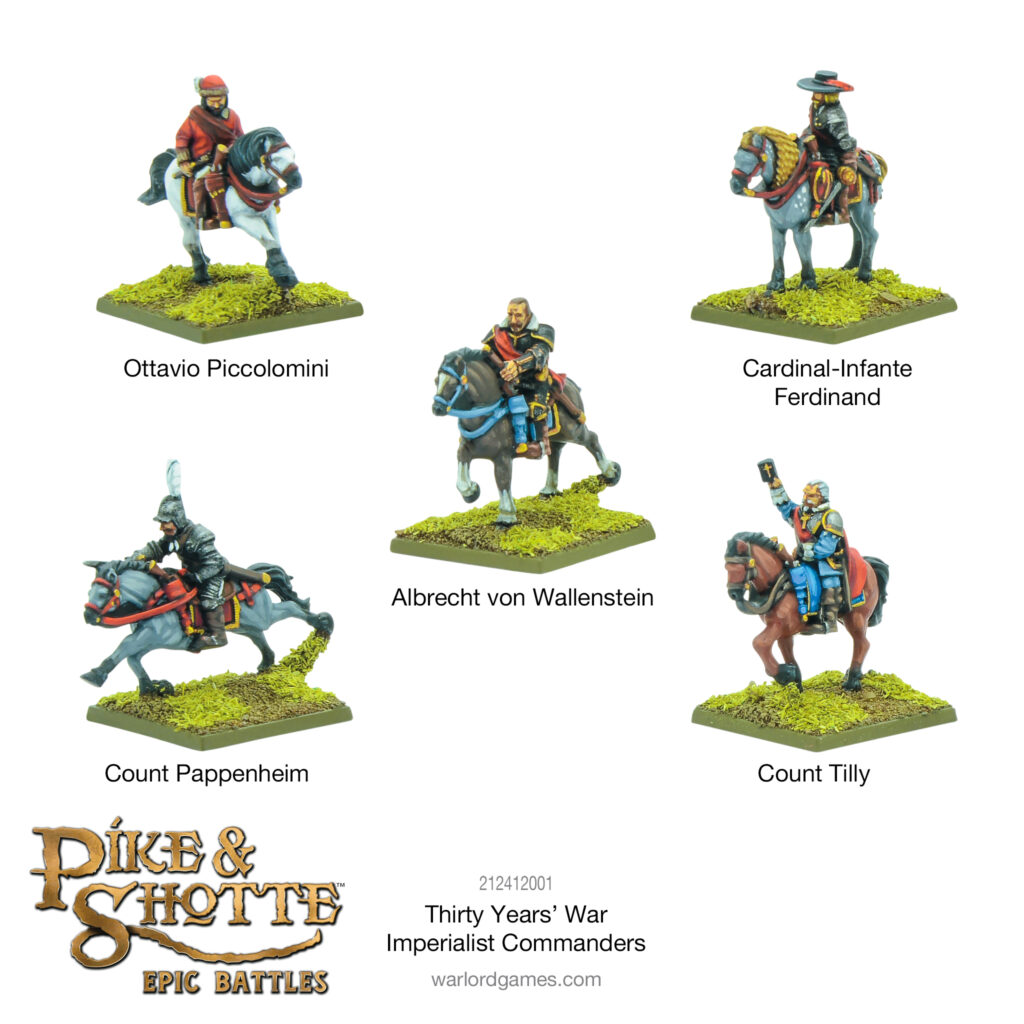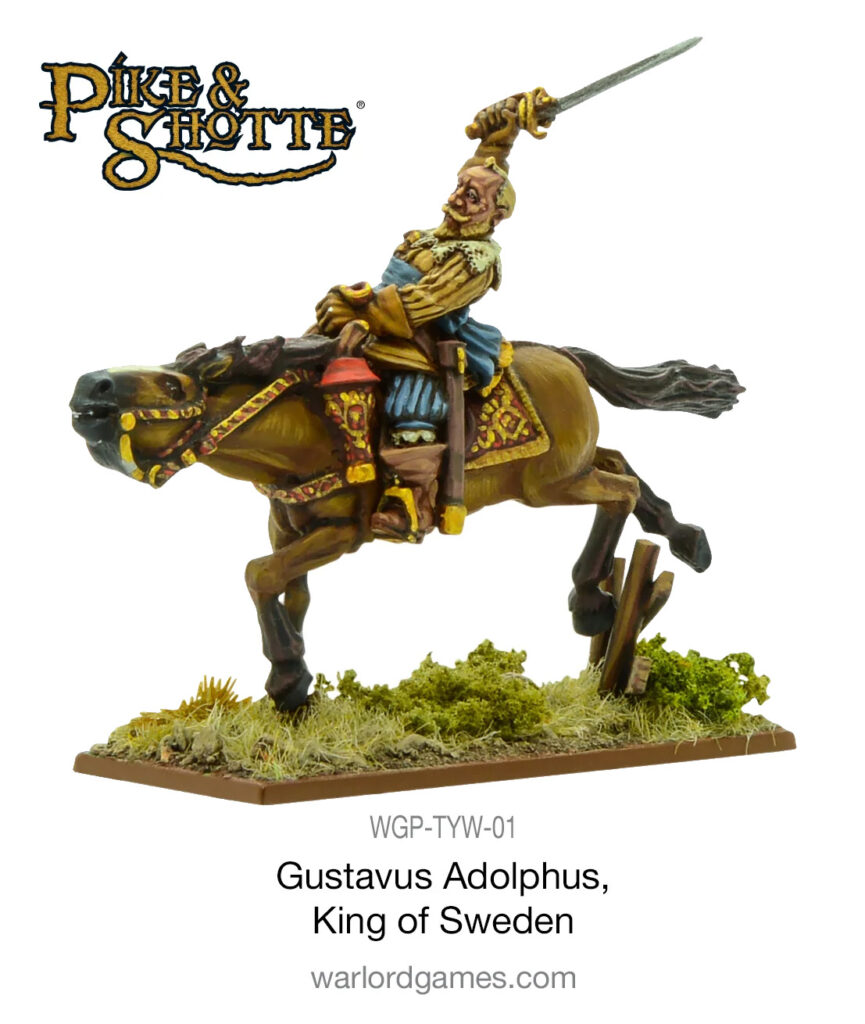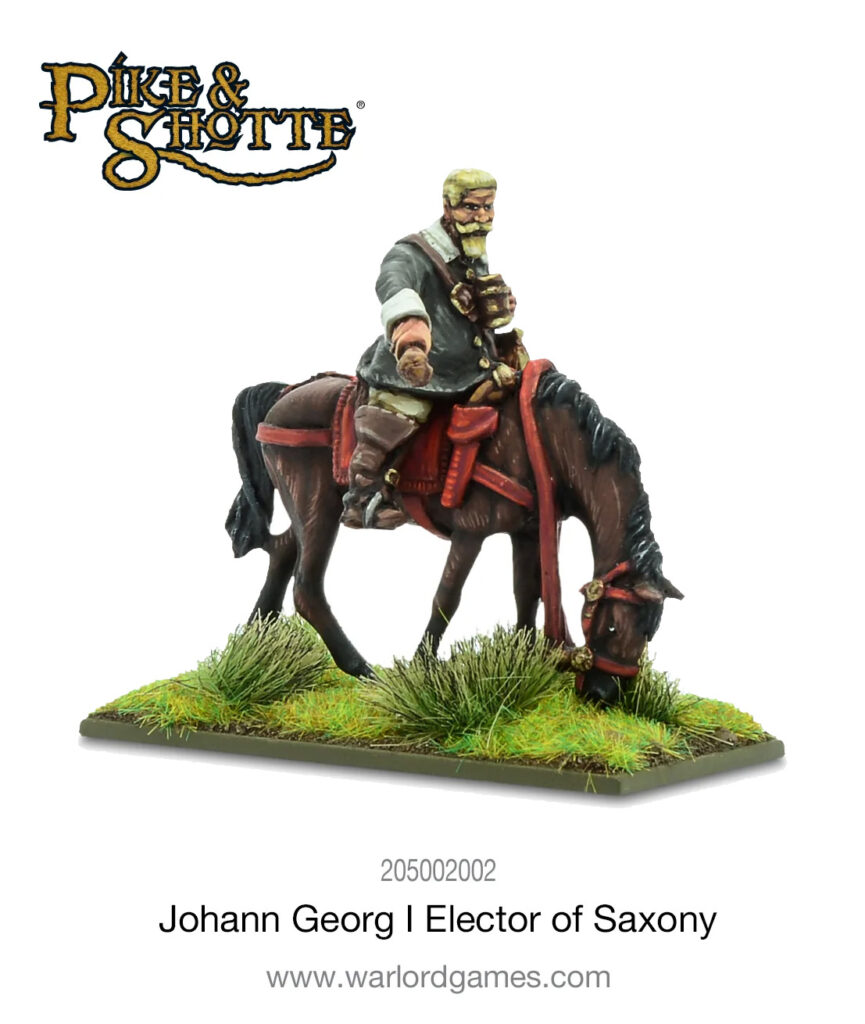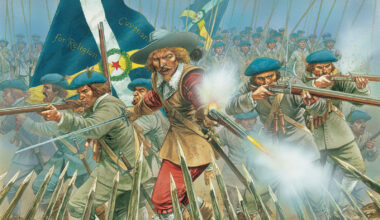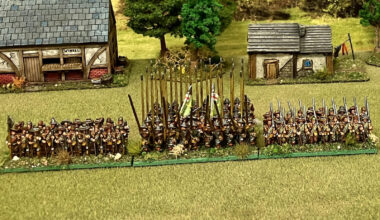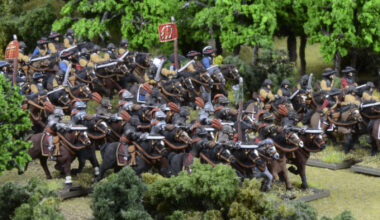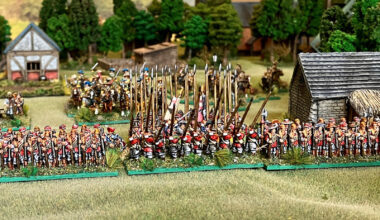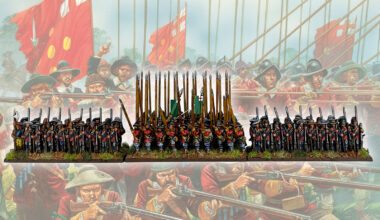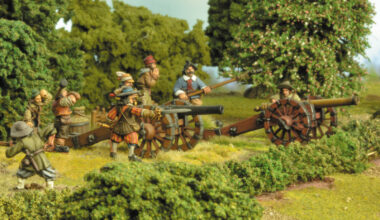After previously looking at the other senior figures of the two main conflicts of seventeenth-century Europe, the Thirty Years’ War and the English Civil Wars, we finally come to the commanders of the Protestant Alliance. Let’s examine these men, their careers, and the impact they had on history and can have on your Epic Battles tabletops!
Gustavus Adolphus
We’ll lead off with probably the most famous name of the Thirty Years’ War – Gustavus Adolphus, King of Sweden, popularly known as ‘The Lion from the North’ and the ‘Father of Modern Warfare’. Becoming King at 16 in 1611, and gaining full power at 17, Gustavus inherited a trio of ongoing wars from his father, against Poland-Lithuania, Russia, and Denmark-Norway – the latter two were quickly resolved by diplomacy, with the Poland-Lithuania war ending in 1629. A keen military and political student, Gustavus closely followed the military reforms of Maurice of Nassau and expanded on them, becoming renowned as one of the greatest generals in European history. A very aggressive commander, he utilised an early form of what would become known as ‘combined arms’ tactics, utilising highly mobile artillery to support his attacking use of cavalry. His infantry was also deployed in wider, shallower formations, as opposed to the more traditional deep pike formations of the traditional Spanish tercio style. He treated all arms of his army as equally important and recognised the fact that no one arm could win a war unsupported. This system would revolutionise European warfare, and when the Swedes joined the Protestant cause its might would be ranged against the Holy Roman Empire and her allies.
Pushing into Northern Germany, and then through the myriad smaller German states, Gustavus’ force met the legendary Count Tilly’s army at Breitenfeld in September 1631. Repulsing Pappenheim’s cavalry, and after five hours of hard fighting, Gustavus personally led his cavalry in a daring assault that began the rout of the Imperialist force, and brought about a stunning victory. Undoubtedly a brave and deeply religious man, Gustavus was reputed to eschew the wearing of armour on the battlefield (although whether this was an exaggeration and he simply wore lighter protection than many of his fellow officers due to a previous injury sustained fighting the Poles is hotly debated to this day), claiming “the Lord God is my armour!”. This would prove to be his undoing at Lutzen in 1632 – although the Swedes were victorious, their king was found dead on the battlefield, having been shot and stabbed multiple times. Compare this fate to that of Haselrig at Roundway Down some decades later in the English Civil Wars, and it is easy to believe that the cuirassier armour of the period might well have saved the Swedish monarch’s life. Aged just 37, his death had a catastrophic effect on the Protestant cause, and robbed Europe of arguably its most able military thinker.
His military acumen is reflected in Pike & Shotte by his Command rating of 9, and the special rule Lion of the North, which means that when he issues a Follow Me order, the entire battalia comes with him – exactly what you need for those decisive blows!
Johann Georg I
Johann Georg I, Elector of Saxony, was an interesting character in the Thirty Years’ War. A firm Protestant, and leader of one of the principal territories of the Holy Roman Empire, he feared the Imperial anti-Protestant policies, but nevertheless remained loyal to the Imperialist cause in the opening stages of the Thirty Years’ War, assisting in crushing the Bohemian rebels, deeming it the best way to remain neutral and avoid any future trouble. Events soon transpired that would take this out of his hands; whilst Gustavus Adolphus attempted to sway him to support the Protestant Alliance, he was unsuccessful until Tilly launched a pre-emptive invasion of Saxony to prevent just this – despite the fact that Johann Georg probably had, until that point, no intention of joining the Swedes!
The Saxon troops fought poorly and were routed at Breitenfeld, and although his forces occupied Prague shortly thereafter, Johann Georg’s primary motivation seems to have been to sue for a favourable peace – this was achieved in 1635 at the Treaty of Prague, after which he promptly turned about-face and attacked the Swedes, being soundly beaten at Wittstock in 1636. Saxony then spent a considerable time being plundered and battered by both sides of the war, and its people suffered terribly until the elector was able to make peace with the Swedes in 1645, effectively ending Saxony’s participation in the war.
He may not be able to hold a candle to the likes of Gustavus Adolphus, but you do need him for those Breitenfeld games! He does get to upgrade a unit of Cuirassiers with Elite and Lance for +10 points, but every time he Blunders, he loses a point of Command. He starts with a respectable 8… but this will only last until a battle starts going pear-shaped!
King Christian IV of Denmark
Next up is King Christian IV of Denmark (and Norway)! Denmark’s longest-reigning monarch (at the time of writing), he was a well-respected and powerful king, well-liked by his subjects (despite something of an obsession with witch-burning), and fond of heavy drinking, gambling, music, and dancing. While sometimes prone to over-ambition, he raised a powerful navy, established many new towns and cities, set up a wide trading network, and brought a time of great peace to his twin kingdoms.
Christian’s entry into the Thirty Years’ War was brought about due to expansionist ambition, as he desired territory in northern Germany. Backed by large numbers of Scottish mercenaries, in 1625 he launched his campaign, which would come to be known as the ‘Emperors’ War’ in Denmark and Norway. Despite a promising start, the following year Tilly smashed him at Lutter and by 1627 had occupied the whole of Jutland alongside Wallenstein. This effectively forced Denmark from the war, as Christian signed a treaty with Sweden which guaranteed his territories in exchange for him playing no further part in the conflict. His foreign policy in the subsequent decade or so was decidedly erratic but firmly anti-Swedish, and in 1643 the Swedes launched an invasion of Denmark. Although Christian led bravely and dynamically (being badly wounded in a naval battle), the Danes were overmatched and were forced to cede significant territory and Baltic supremacy to Sweden. Despite this setback, Christian’s popularity at home remained undiminished, and he is remembered to this day as a great king.
Representing his undoubted self-belief, in Pike & Shotte he has a Command of 8 and the ability to make any Elite 4+ units within 12” of him Valiant. As befits a king, he can also upgrade one unit of Cuirassiers to Elite 4+ and Lance to portray his Lifeguard, and this makes him an ideal choice to lead a heavy cavalry battalia into the fray!
Åke Tott
Åke Tott was a Finnish nobleman in Swedish service, and by the time of the campaigns of Gustavus Adolphus was a seasoned soldier, having joined the Swedish war against Russia at the age of 15. Following the conclusion of this campaign, he entered the service of the Republic of Venice as a mercenary, as well as travelling throughout Europe. On returning to Sweden he became Chamberlain to Gustavus, and in time was appointed the commander of Sweden’s Finnish cavalry forces. These were aggressive, well-trained light horsemen, known as Hakkapeliitta, a word stemming from their battle-cry of “hakkaa päälle”, which roughly translates as “cut/strike them down!”, and Tott was an aggressive commander to match. At Grubin in 1627, Tott routed a much larger Polish army with his hard-charging tactics – this feat earned him a knighthood, and the frankly wonderful epithet of “The Snowplough”, allegedly from Gustavus Adolphus himself, in reference to the fact that Tott would “sweep all others before him”. At Breitenfeld, he led the Swedish cavalry against Tilly’s army, living up to his nickname, and went on to see continued success in the subsequent campaigns. With his king’s death at Lützen, Tott was a part of the solemn entourage that returned their beloved monarch’s body to Sweden.
With a Command of 8 and the ability to make all cavalry units in his battalia Eager for 3 points each, Tott makes a great cavalry commander for any Swedish force – line his horsemen up, and set ‘em loose!
Louis de Bourbon
Finally, we come to Louis de Bourbon, Prince of Condé (not to be confused with his sixteenth-century namesake). For all we’re talking about Protestant commanders of the Thirty Years’ War, Louis was actually a Catholic nobleman, well-educated and respected at court, and in 1643 was appointed to command the French forces against the Spanish at the tender age of 21. Despite his inexperience, Louis was able to engineer a famous victory at Rocroi. This win, achieved in the face of the feared Spanish tercio infantry system, instantly catapulted Louis to celebrity status, and he would continue to lead with great success, grinding out a bloody draw at Freiburg in 1644 and a hard-fought victory at Nördlingen the following year. When he became the Prince of Condé in 1646, political infighting forced him to spend much of his time in France defending his reputation, but when a series of rebellions broke out in France in 1648 and the Spanish attempted to intervene, he met them at Lens and defeated them handily. This would prove to be the last major battle of the Thirty Years’ War, and cemented his legacy as the ‘Grand Condé’.
A series of escapades postwar would follow, including a dalliance in Spanish service against France, a reconciliation, and war with the Dutch, but we represent him as a young man with an excellent Command of 9. Such is the inspiring presence of the Great Condé that he also provides all friendly units within 12” with +D3 Combat Resolution, making him a great choice to command your late-war army from the thick of the action.
Commanders of the Thirty Years’ War
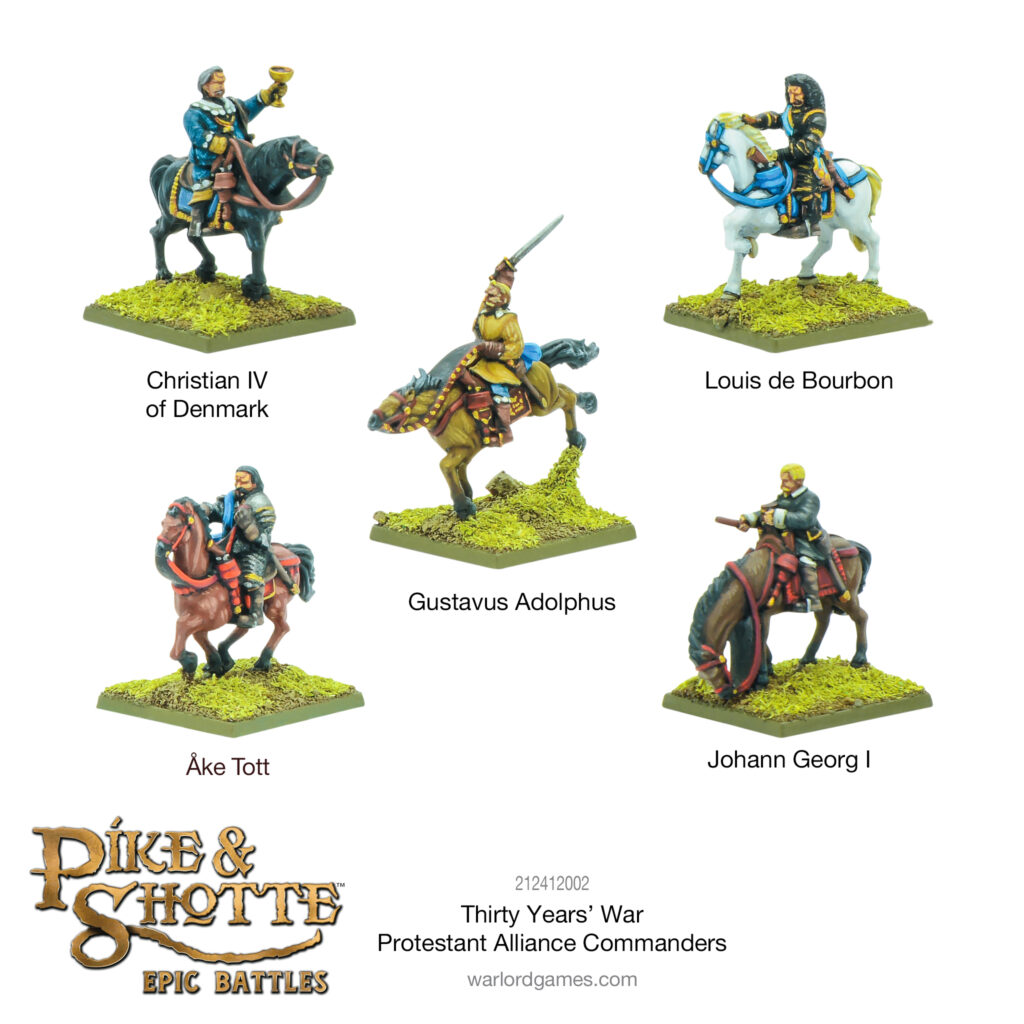
Pike & Shotte in 28mm!
These Protestant Alliance commanders are also available to lead 28mm Pike & Shotte armies!
